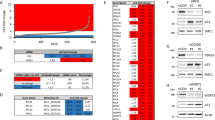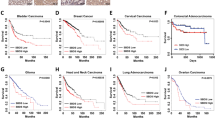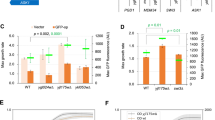Abstract
The autosomal recessive disorder Shwachman-Diamond syndrome, characterized by bone marrow failure and leukemia predisposition, is caused by deficiency of the highly conserved Shwachman-Bodian-Diamond syndrome (SBDS) protein. Here, we identify the function of the yeast SBDS ortholog Sdo1, showing that it is critical for the release and recycling of the nucleolar shuttling factor Tif6 from pre-60S ribosomes, a key step in 60S maturation and translational activation of ribosomes. Using genome-wide synthetic genetic array mapping, we identified multiple TIF6 gain-of-function alleles that suppressed the pre-60S nuclear export defects and cytoplasmic mislocalization of Tif6 observed in sdo1Δ cells. Sdo1 appears to function within a pathway containing elongation factor–like 1, and together they control translational activation of ribosomes. Thus, our data link defective late 60S ribosomal subunit maturation to an inherited bone marrow failure syndrome associated with leukemia predisposition.
This is a preview of subscription content, access via your institution
Access options
Subscribe to this journal
Receive 12 print issues and online access
$209.00 per year
only $17.42 per issue
Buy this article
- Purchase on SpringerLink
- Instant access to full article PDF
Prices may be subject to local taxes which are calculated during checkout







Similar content being viewed by others
Accession codes
References
Hall, G.W., Dale, P. & Dodge, J.A. Shwachman-Diamond syndrome: UK perspective. Arch. Dis. Child. 91, 521–524 (2006).
Donadieu, J. et al. Hematopoietic stem cell transplantation for Shwachman-Diamond syndrome: experience of the French neutropenia registry. Bone Marrow Transplant. 36, 787–792 (2005).
Boocock, G.R. et al. Mutations in SBDS are associated with Shwachman-Diamond syndrome. Nat. Genet. 33, 97–101 (2003).
Koonin, E.V., Wolf, Y.I. & Aravind, L. Prediction of the archaeal exosome and its connections with the proteasome and the translation and transcription machineries by a comparative-genomic approach. Genome Res. 11, 240–252 (2001).
Wu, L.F. et al. Large-scale prediction of Saccharomyces cerevisiae gene function using overlapping transcriptional clusters. Nat. Genet. 31, 255–265 (2002).
Peng, W.T. et al. A panoramic view of yeast noncoding RNA processing. Cell 113, 919–933 (2003).
Krogan, N.J. et al. Global landscape of protein complexes in the yeast Saccharomyces cerevisiae. Nature 440, 637–643 (2006).
Shammas, C. et al. Structural and mutational analysis of the SBDS protein family. Insight into the leukemia-associated Shwachman-Diamond Syndrome. J. Biol. Chem. 280, 19221–19229 (2005).
Savchenko, A. et al. The Shwachman-Bodian-Diamond syndrome protein family is involved in RNA metabolism. J. Biol. Chem. 280, 19213–19220 (2005).
Ho, Y. et al. Systematic identification of protein complexes in Saccharomyces cerevisiae by mass spectrometry. Nature 415, 180–183 (2002).
Andersen, J.S. et al. Nucleolar proteome dynamics. Nature 433, 77–83 (2005).
Austin, K.M., Leary, R.J. & Shimamura, A. The Shwachman-Diamond SBDS protein localizes to the nucleolus. Blood 106, 1253–1258 (2005).
Zhang, S., Shi, M., Hui, C.C. & Rommens, J.M. Loss of the mouse ortholog of the Shwachman-Diamond syndrome gene (Sbds) results in early embryonic lethality. Mol. Cell. Biol. 26, 6656–6663 (2006).
Winzeler, E.A. et al. Functional characterization of the S. cerevisiae genome by gene deletion and parallel analysis. Science 285, 901–906 (1999).
Jorgensen, P. et al. High-resolution genetic mapping with ordered arrays of Saccharomyces cerevisiae deletion mutants. Genetics 162, 1091–1099 (2002).
Becam, A.M., Nasr, F., Racki, W.J., Zagulski, M. & Herbert, C.J. Ria1p (Ynl163c), a protein similar to elongation factors 2, is involved in the biogenesis of the 60S subunit of the ribosome in Saccharomyces cerevisiae. Mol. Genet. Genomics 266, 454–462 (2001).
Senger, B. et al. The nucle(ol)ar Tif6p and Efl1p are required for a late cytoplasmic step of ribosome synthesis. Mol. Cell 8, 1363–1373 (2001).
Basu, U., Si, K., Warner, J.R. & Maitra, U. The Saccharomyces cerevisiae TIF6 gene encoding translation initiation factor 6 is required for 60S ribosomal subunit biogenesis. Mol. Cell. Biol. 21, 1453–1462 (2001).
Ceci, M. et al. Release of eIF6 (p27BBP) from the 60S subunit allows 80S ribosome assembly. Nature 426, 579–584 (2003).
Groft, C.M., Beckmann, R., Sali, A. & Burley, S.K. Crystal structures of ribosome anti-association factor IF6. Nat. Struct. Biol. 7, 1156–1164 (2000).
Schroeder, R., Waldsich, C. & Wank, H. Modulation of RNA function by aminoglycoside antibiotics. EMBO J. 19, 1–9 (2000).
Kressler, D., de la Cruz, J., Rojo, M. & Linder, P. Fal1p is an essential DEAD-box protein involved in 40S-ribosomal-subunit biogenesis in Saccharomyces cerevisiae. Mol. Cell. Biol. 17, 7283–7294 (1997).
Foiani, M., Cigan, A.M., Paddon, C.J., Harashima, S. & Hinnebusch, A.G. GCD2, a translational repressor of the GCN4 gene, has a general function in the initiation of protein synthesis in Saccharomyces cerevisiae. Mol. Cell. Biol. 11, 3203–3216 (1991).
Hurt, E. et al. A novel in vivo assay reveals inhibition of ribosomal nuclear export in ran-cycle and nucleoporin mutants. J. Cell Biol. 144, 389–401 (1999).
West, M., Hedges, J.B., Chen, A. & Johnson, A.W. Defining the order in which Nmd3p and Rpl10p load onto nascent 60S ribosomal subunits. Mol. Cell. Biol. 25, 3802–3813 (2005).
Dick, F.A., Karamanou, S. & Trumpower, B.L. QSR1, an essential yeast gene with a genetic relationship to a subunit of the mitochondrial cytochrome bc1 complex, codes for a 60 S ribosomal subunit protein. J. Biol. Chem. 272, 13372–13379 (1997).
Hazbun, T.R. et al. Assigning function to yeast proteins by integration of technologies. Mol. Cell 12, 1353–1365 (2003).
Ho, J.H., Kallstrom, G. & Johnson, A.W. Nmd3p is a Crm1p-dependent adapter protein for nuclear export of the large ribosomal subunit. J. Cell Biol. 151, 1057–1066 (2000).
Kudo, N. et al. Leptomycin B inhibition of signal-mediated nuclear export by direct binding to CRM1. Exp. Cell Res. 242, 540–547 (1998).
Hung, N.J. & Johnson, A.W. Nuclear recycling of the pre-60S ribosomal subunit-associated factor Arx1 depends on Rei1 in Saccharomyces cerevisiae. Mol. Cell. Biol. 26, 3718–3727 (2006).
Graindorge, J.S. et al. Deletion of EFL1 results in heterogeneity of the 60 S GTPase-associated rRNA conformation. J. Mol. Biol. 352, 355–369 (2005).
Spahn, C.M. et al. Domain movements of elongation factor eEF2 and the eukaryotic 80S ribosome facilitate tRNA translocation. EMBO J. 23, 1008–1019 (2004).
Rodnina, M.V., Savelsbergh, A. & Wintermeyer, W. Dynamics of translation on the ribosome: molecular mechanics of translocation. FEMS Microbiol. Rev. 23, 317–333 (1999).
Draptchinskaia, N. et al. The gene encoding ribosomal protein S19 is mutated in Diamond-Blackfan anaemia. Nat. Genet. 21, 169–175 (1999).
Gazda, H.T. et al. Ribosomal protein S24 gene is mutated in Diamond-Blackfan anemia. Am. J. Hum. Genet. 79, 1110–1118 (2006).
Heiss, N.S. et al. X-linked dyskeratosis congenita is caused by mutations in a highly conserved gene with putative nucleolar functions. Nat. Genet. 19, 32–38 (1998).
Lafontaine, D.L., Bousquet-Antonelli, C., Henry, Y., Caizergues-Ferrer, M. & Tollervey, D. The box H + ACA snoRNAs carry Cbf5p, the putative rRNA pseudouridine synthase. Genes Dev. 12, 527–537 (1998).
Ruggero, D. et al. Dyskeratosis congenita and cancer in mice deficient in ribosomal RNA modification. Science 299, 259–262 (2003).
Yoon, A. et al. Impaired control of IRES-mediated translation in X-linked dyskeratosis congenita. Science 312, 902–906 (2006).
Wong, J.M. & Collins, K. Telomerase RNA level limits telomere maintenance in X-linked dyskeratosis congenita. Genes Dev. 20, 2848–2858 (2006).
Amsterdam, A. et al. Many ribosomal protein genes are cancer genes in zebrafish. PLoS Biol. 2, E139 (2004).
Watson, K.L., Konrad, K.D., Woods, D.F. & Bryant, P.J. Drosophila homolog of the human S6 ribosomal protein is required for tumor suppression in the hematopoietic system. Proc. Natl. Acad. Sci. USA 89, 11302–11306 (1992).
Boocock, G.R., Marit, M.R. & Rommens, J.M. Phylogeny, sequence conservation, and functional complementation of the SBDS protein family. Genomics (2006).
Tong, A.H. et al. Global mapping of the yeast genetic interaction network. Science 303, 808–813 (2004).
Tong, A.H. et al. Systematic genetic analysis with ordered arrays of yeast deletion mutants. Science 294, 2364–2368 (2001).
Davierwala, A.P. et al. The synthetic genetic interaction spectrum of essential genes. Nat. Genet. 37, 1147–1152 (2005).
Carr-Schmid, A. et al. Mutations in elongation factor 1beta, a guanine nucleotide exchange factor, enhance translational fidelity. Mol. Cell. Biol. 19, 5257–5266 (1999).
Schmitt, M.E., Brown, T.A. & Trumpower, B.L. A rapid and simple method for preparation of RNA from Saccharomyces cerevisiae. Nucleic Acids Res. 18, 3091–3092 (1990).
Ancliff, P.J. et al. Two novel activating mutations in the Wiskott-Aldrich syndrome protein result in congenital neutropenia. Blood 108, 2182–2189 (2006).
Sanvito, F. et al. The beta4 integrin interactor p27(BBP/eIF6) is an essential nuclear matrix protein involved in 60S ribosomal subunit assembly. J. Cell Biol. 144, 823–837 (1999).
Acknowledgements
We thank E. Hurt (University of Heidelberg) for providing plasmids expressing Rpl25-eGFP, Rps2-eGFP and DsRed-Nop1; B. Trumpower (Dartmouth Medical School) for providing Rpl10 antisera; the Yeast Resource Center (http://www.yeastrc.org/pdr/) for providing strain TDY619; D. Tollervey for discussion of unpublished data; S. Munro (MRC Laboratory of Molecular Biology) for discussion and strains SEY6210 and BY4741; J. Kilmartin (MRC Laboratory of Molecular Biology) for discussion and plasmid pFA6-KanMX4; B. Andrews and J. Sale for critical reading of the manuscript and C. Hilcenko for advice on data analysis. We thank A. Johnson (University of Texas) for CRM1-T539C strains and M. Blundell (Great Ormond St. Hospital) for technical advice. This work was supported by grants from the UK Leukaemia Research Fund (A.J.W. and T.M.), the MRC (A.J.W. and C.C.W.), the Raymond and Beverly Sackler Fund (T.M. and C.C.W.), Shwachman-Diamond Support and the Leukemia and Lymphoma Society. C.B. was supported by grants from the National Cancer Institute of Canada, the Canadian Institute of Health Research, Genome Canada and Genome Ontario.
Author information
Authors and Affiliations
Corresponding author
Ethics declarations
Competing interests
The authors declare no competing financial interests.
Supplementary information
Supplementary Fig. 1
Sdo1 depletion results in underaccumulation of 60S ribosomes. (PDF 166 kb)
Supplementary Fig. 2
[3H-methyl]-methionine pulse-chase labeling analysis of pre-rRNA processing in Sdo1-depleted cells. (PDF 611 kb)
Supplementary Fig. 3
Yeast Sdo1 and human SBDS FYSH domains are functionally interchangeable in sdo1Δ cells. (PDF 82 kb)
Supplementary Table 1
Yeast strains. (PDF 44 kb)
Supplementary Table 2
Primers. (PDF 17 kb)
Rights and permissions
About this article
Cite this article
Menne, T., Goyenechea, B., Sánchez-Puig, N. et al. The Shwachman-Bodian-Diamond syndrome protein mediates translational activation of ribosomes in yeast. Nat Genet 39, 486–495 (2007). https://doi.org/10.1038/ng1994
Received:
Accepted:
Published:
Issue Date:
DOI: https://doi.org/10.1038/ng1994
This article is cited by
-
Knockdown of the Shwachman-Diamond syndrome gene, SBDS, induces galectin-1 expression and impairs cell growth
International Journal of Hematology (2024)
-
Convergent somatic evolution commences in utero in a germline ribosomopathy
Nature Communications (2023)
-
Global network analysis in Schizosaccharomyces pombe reveals three distinct consequences of the common 1-kb deletion causing juvenile CLN3 disease
Scientific Reports (2021)
-
Evolutionary and functional relationships in the ribosome biogenesis SBDS and EFL1 protein families
Molecular Genetics and Genomics (2021)
-
Distinct genetic pathways define pre-malignant versus compensatory clonal hematopoiesis in Shwachman-Diamond syndrome
Nature Communications (2021)



